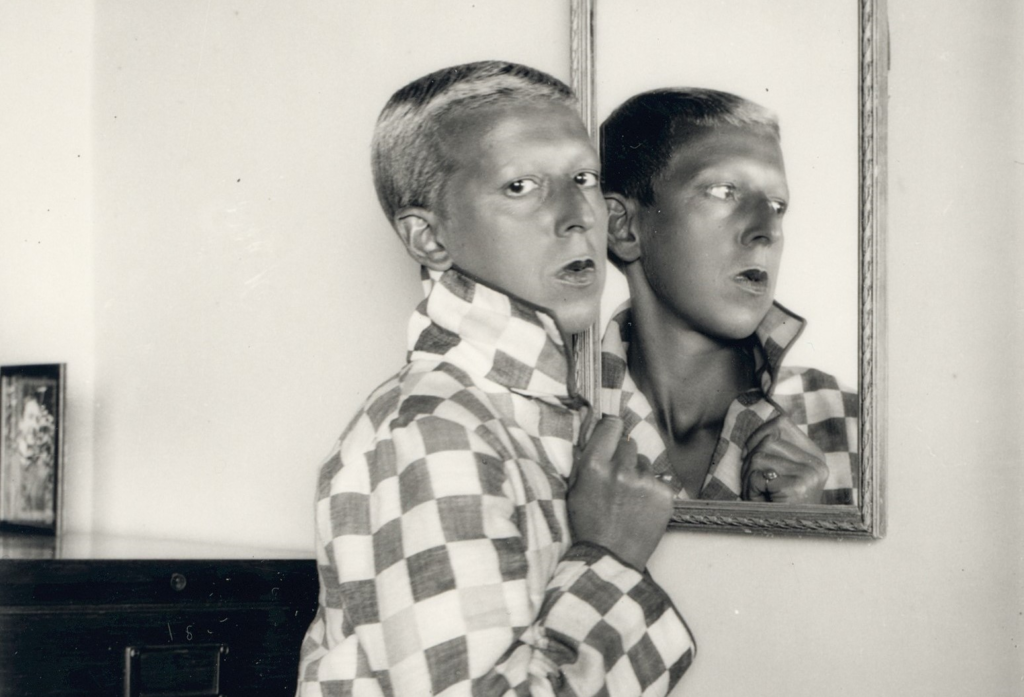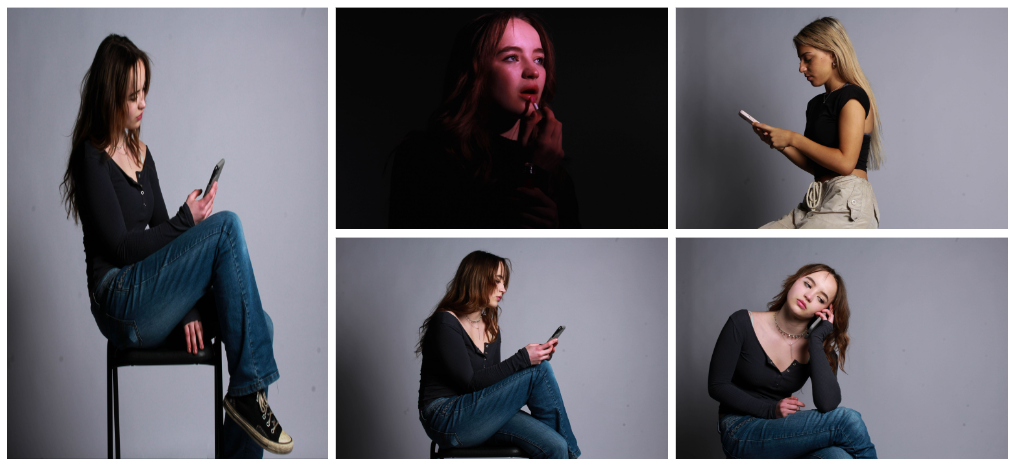Claude Cahun:
Claude Cahun was a French surrealist photographer, sculptor, and writer. She is best known today for her surreal self-portrait photographs which show her dressed as different characters. Cahun staged images of herself that challenged the idea of the politics of gender which can be seen throughout her work.
Surrealism is defined as a 20th-century avant-garde movement in art and literature which sought to release the creative potential of the unconscious mind, for example by the irrational juxtaposition of images.
During the early 1920s, Claude Cahun settled in Paris with her lifelong partner Suzanne Malherbe, who adopted the name Marcel Moore. However, the two became step-sisters in 1917 after Cahun’s divorced father and Moore’s widowed mother married, eight years after Cahun and Moore’s artistic and romantic partnership began. For the rest of their lives together, Cahun and Moore collaborated on various written works, sculptures, photomontages and collages.

In 1937 Cahun and Moore settled in Jersey. Following the fall of France and the German occupation of Jersey and the other Channel Islands, they became active as resistance workers and propagandists. The two were very against war, and worked extensively together to produce anti-German fliers. Cahun and Moore’s resistance efforts were not only political but artistic actions, using their creative talents to manipulate and undermine the authority which they despised. Cahun’s life’s work was focused on undermining a certain authority; however, their activism posed a threat to their physical safety. As in 1944 Cahun and Moore were arrested and sentenced to death. However, the sentence was never carried out as Jersey was liberated from German occupation in 1945. Sadly, Cahun’s health never recovered from her treatment in jail and she died in 1954. Much of her and Moore’s work was destroyed by the Nazis who requisitioned their home.
Claude Cahun was born as Lucy Schwob in Nantes, France to a wealthy Jewish family. But in her late teens and early twenties Cahun had been looking for a new, gender-neutral name. She fixed on the name Claude Cahun in 1918.
gender fluidity is a non-fixed gender identity that shifts over time or depending on the situation.
Here is one of Claude Cahun’s most famous pieces of work:

In this image you can see Cahun being doubled by a mirrored reflection. She is seen wearing gender neutral clothing and short hair which goes against what a typical woman was thought to look like, highlighting the idea of her gender neutrality. Mirrors were traditionally used in art in order to expose two enticing views of a female subject or as a way to emphasise a woman’s vanity. However, instead of Cahun looking into the mirror, she instead looks at the camera potentially conveying the message that she is rejecting the stereotype of women being consumed by self admiration. This could also be a symbol of her uncertainty about her own identity at the time as she maybe didn’t feel like the person she saw in the mirror. Additionally, Cahun shows two different personalities through the mirrored version of her and the actual version of her. This can be seen in the mirrored version in which her neck is exposed whereas the actual her has her jacket covering her neck. This can relate back to the traditional view in which mirrors were used to get flattering views of women, maybe suggesting that the mirror is what society sees of women but the non mirrored her is how she feels about her identity and how she doesn’t fit into that traditional self absorbed mindset. These two personalities being displayed in one picture gives us an insight into the divide one may feel within themself regarding their identity and belonging. Overall, I like how this image has a deeper meaning then to what is initially let on, as at first glance, it just looks like a mirror is used to reflect a person but as you look closer and see the differences between the mirrored person and actual person, you get an insight into her life and society at that time.
Cindy Sherman:
Cindy Sherman was born in 1952 and is an American artist who’s work consists primarily of photographic self portraits, depicting herself in many different contexts and as various imagined characters. Sherman was always interested in experimenting with different identities and has continued to transform herself, displaying the diversity of human types and stereotypes in her images. Sherman works in series, typically photographing herself in a range of costumes. To create her photographs, Sherman shoots alone in her studio, assuming multiple roles as author, director, make-up artist, hairstylist, wardrobe mistress, and model. Many of Sherman’s photo series, like the 1981 Centerfolds, call attention to stereotypes of women in society, films, television and magazines.

In Sherman’s Imitation of Life series of 2016 she poses in vintage costumes and theatrical makeup, as a variety of ageing actress-like women. Much of Cindy Sherman’s work is based around the concept of the male gaze, with many photographs of women being feminine and showing off their body or wearing revealing items of clothing. This also gives us an insight into society at the time who mainly saw women as pretty objects that were used in the film industry simply to look enticing and get more public attention, not actually playing an important role in the films.
In 1972, Sherman enrolled in the visual arts department at Buffalo State College where she began painting. During this time, she began to explore the ideas which became a hallmark of her work: She dressed herself as different characters, cobbled together from thrift-store clothing. However, frustrated with what she saw as the limitations of painting as a medium of art, she abandoned it and took up photography.

I think this photograph successfully captures the idea of Cindy Sherman referencing to the male gaze, as the model is seen in a towel which could be perceived as provocative as most of the model’s skin is showing. This photograph could also link to Claude Cahun as she described women at the time as being absorbed with their looks which is what this image is supporting the idea of. This image encapsulates the idea of a stereotypical woman in the 1950s who is embracing her femininity and womanhood as she is looking into the mirror instead of looking the other way as seen in Claude Cahun’s image.
Cindy Sherman Inspired photoshoot:
For this photoshoot, I was inspired by Cindy Sherman and the idea of photographing a stereotypical woman in the world today and how it compares with the women from the 1950s who she photographed. When I first thought of a stereotypical woman today, I thought of a girl on her phone as that is a prominent part of society in the 20th century. So, I decided to take photographs of different girls on their phone. I also wanted to recreate the feminine, girly photographs Cindy Sherman took of women and so I took images of a girl applying lipgloss which is seen as a feminine thing. I also used a pink light in these images in order to enhance the theme of femininity.

Overall, I like how this photoshoot came out as I think I managed to successfully capture a stereotypical woman in 2024 and get some images that are feminine, which is what I was trying to achieve. To finish this photoshoot off, I may try and recreate one of Cindy Sherman’s photographs from her collection called ‘This is how I look. I guess’ in photoshop as a final outcome.
